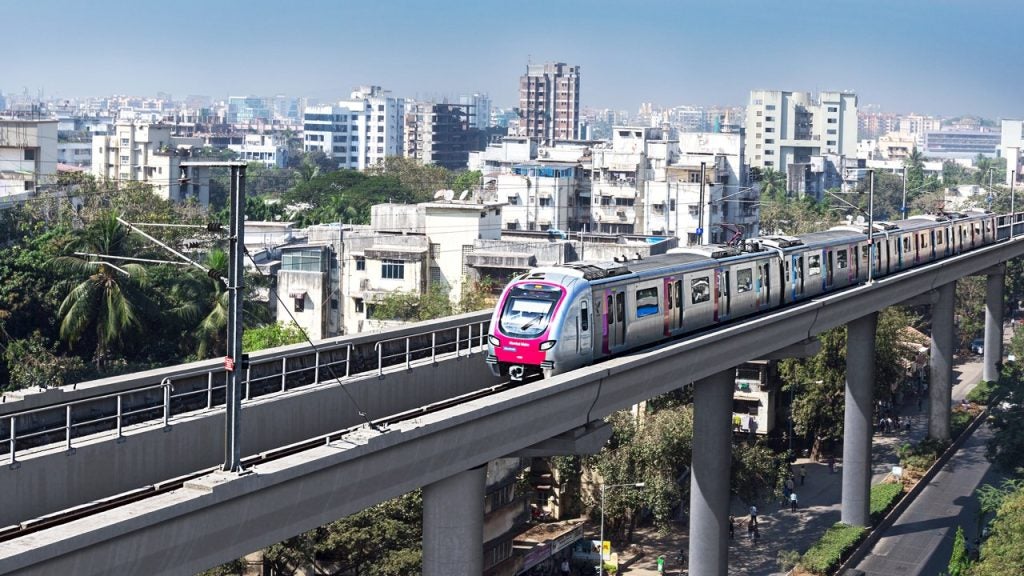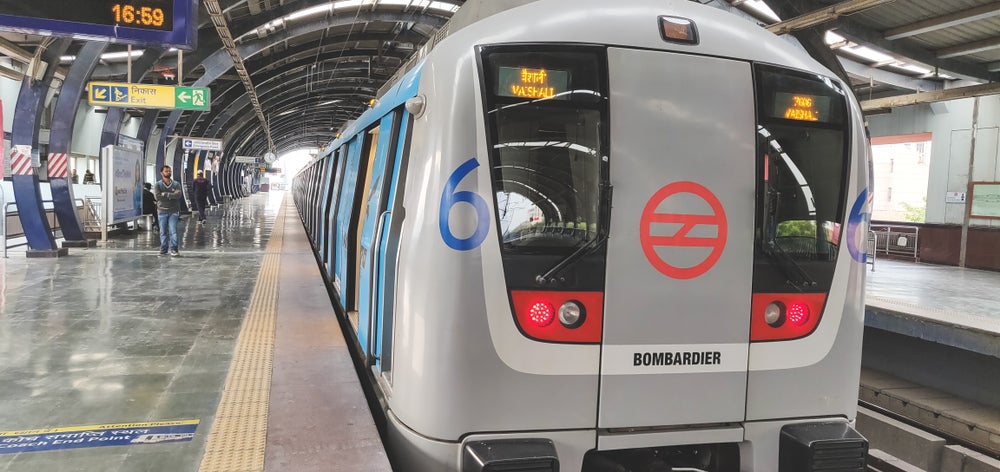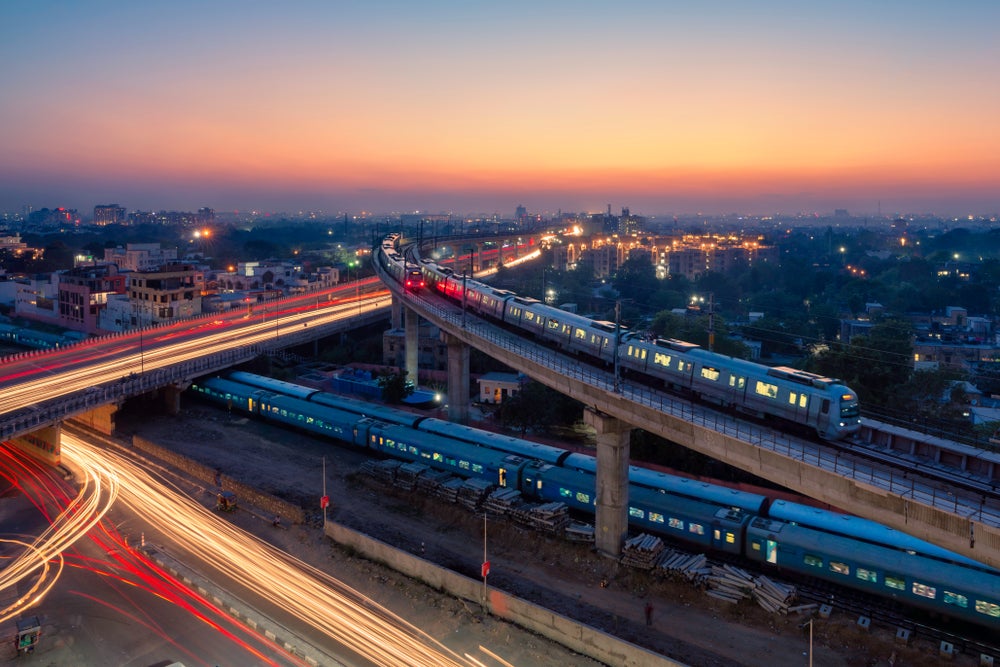Serving over 2.63 billion people annually, the India Metro network spanning the country’s 15 major cities is one of the largest and busiest urban rapid transit networks in the world. For example, Delhi Metro recorded 6.99 million passenger journeys in a single day on 31 August 2023, the highest ridership ever recorded.
But even though the metro is one of the most sustainable means of mass transport, it still requires enormous amounts of energy. As India continues to push ahead with its bold climate commitments, the task ahead centres on making travelling around its growing cities more reliable and more energy efficient – no easy feat.
India continues to see rapid urbanisation on a very large scale. It is estimated that around a third (35%) of the total population in India now lives in cities, compared to only 18% in 1960. As more Indians move away from rural areas to find work and make a living in the cities, by 2035 it’s estimated that this figure will stand at 43.2%.

Inherently, this creates numerous critical challenges for India’s cities. Principally, it places greater onus on the role of its transport systems in supporting connectivity, trade, and economic growth.
But transport has traditionally been one of the world’s biggest sources of carbon emissions too. Therefore, if India is to keep its ambitious climate commitment to reduce emissions intensity by 45% from the 2005 level by 2030, it must accelerate the decarbonisation of its urban transport infrastructure at the same time.
Of course, India already has a vast Mass Rapid Transit System (MRTS), a state-owned subsidiary of Indian Railways, providing a more energy-efficient and less polluting urban transport alternative to its buses, cars, motorcycles, and popular motorised rickshaws.

US Tariffs are shifting - will you react or anticipate?
Don’t let policy changes catch you off guard. Stay proactive with real-time data and expert analysis.
By GlobalDataNow, the task lies in extending and enhancing that system to make travelling around India’s cities more reliable, and more energy efficient, thereby fuelling healthier cities. As part of this, India has committed to having 1700km of metro operation in 25 cities by 2025.
The good news in this is that we already have many of the power distribution technologies to enable this formidable challenge – the task now lies in deploying them at scale.
Keeping the power on
Arguably, one of the most important considerations for any metro operator is a reliable and resilient power supply.
With millions of people relying on metro systems to get to work, home and leisure destinations, even the smallest delay or issue caused by a power outage can quickly lead to chaos. For example, a power issue recently brought the Pune Metro service on the Vanaz-Ruby Hall route to a halt for 20 minutes, causing widespread disruption for thousands of commuters.
Recently, ABB India provided the Kanpur Metro with an intelligent distribution architecture – including low voltage switchboards, medium voltage panels and lighting distribution boards – designed to smooth operations, providing a pollution-free, safe commute to citizens and, in turn, easing traffic congestion.

But this is just one example of our ongoing work across 17 Indian metro lines. In other cases, for example, where modernisation or modification work to the metro power network must be achieved at speed and without any, or as little as possible, disruption to services, modular solutions are a great option. Being prefabricated, pre-engineered and pretested for simple execution, changes can be accomplished quickly without the associated downtime. This can reduce deployment time by up to 50%.
For larger upgrades with limited time available for execution, we also offer the option of an e-House – a prefabricated, pretested transportable substation, designed to house medium and low-voltage switchgear, critical power equipment, and automation cabinets for remote command and control. What makes this approach ideal for metro projects is that it allows flexibility in the execution plan and a very limited impact on the revenue service in case of retrofit or extension of existing lines.
Local motives
Inherently, local sourcing should be a key element of any sustainable strategy, helping operators to significantly reduce the carbon emissions associated with transporting parts and equipment over long distances.
In this vein, India’s ‘Make in India’ policy continues to restrict foreign imports and encourage companies to develop, manufacture, and assemble products made in India.
Once again, the power distribution sector has a solution with ABB India manufacturing all of its voltage, switchgear, and many other solutions at its Bangalore, Nashik, and Vadodara factory sites.
Using a local supplier with an acute, first-hand understanding of a region’s unique challenges can prove invaluable.
Not only can this local approach have a profound effect on carbon impact, but it also affords the benefit of local competence and expertise. Every country or region has its own unique set of circumstances, from the volume of demand and future forecasts to the conditions of the metro lines themselves, the associated local and national power generation facilities, and even seasonality factors. India is no exception as it faces the challenges of rapid urbanisation, weather extremes, a developing economy and a highly ambitious net-zero trajectory.
In this way, using a local supplier with an acute, first-hand understanding of a region’s unique challenges can prove invaluable in terms of the opportunity to optimise efficiencies, establish economies of scale and amplify climate impact.
The journey ahead
But it’s not just about securing a reliable power supply for modern metro operators, it is just as important to find new ways to improve energy efficiency and even self-generate.
The ABB Enviline™ Energy Storage System (ESS), for example, can be positioned along the DC line allowing surplus regenerative braking energy to be captured and re-injected directly back into the line to support the acceleration of other nearby trains. The ability to harness the regenerative energy used in this cycle hundreds of times a day offers the single largest opportunity to improve the energy efficiency of traction systems and reduce grid-based demand. It can reduce overall energy consumption by up to 30%.
The system can also be used to manage voltage drops to keep trains running on schedule – all without the associated grid-based power requirement. This reduces associated utility charges and can also be used, in some cases, as an alternative to avoid or defer potential capital investments for new traction substations and additional contracts with utility companies. It also assures critical power backup where, in the event of a power outage or instability from the utility network, operators can access stored energy to move the train to the next station where commuters can safely exit the train.
Another big innovation focus is solar, as more metro operators install rooftop solar power plants at stations to power auxiliary requirements within the station premises such as lighting and air conditioning. New Delhi Metro, for example, now powers 60% of all electrical equipment and devices via solar energy.

Again, partnering that solar investment with battery energy storage systems (BESS) could further enable operators to leverage peak shaving, load shifting and maximisation of self-consumption.
As of 2024, hydrogen trains will finally become a reality in India as Indian Railways launches its first hydrogen train from Jind in Haryana. Importantly, this sustainable breakthrough – where hydrogen and oxygen are used to generate electricity with water being the only by-products – will also provide a vital indicator of hydrogen’s potential to be used in the metro setting.
When it comes to the future of urbanisation not just in India but cities worldwide, no other form of transport can contend with the metro in its potential to support net-zero goals while serving evolving socio-economic needs.
With many of the technologies already available, the recommendation is for metro operators to leverage these today to make the biggest impact in the future. With benefits that go beyond sustainable performance to include energy security and smarter operation, this will help secure a head start on this global industry-defining journey.





